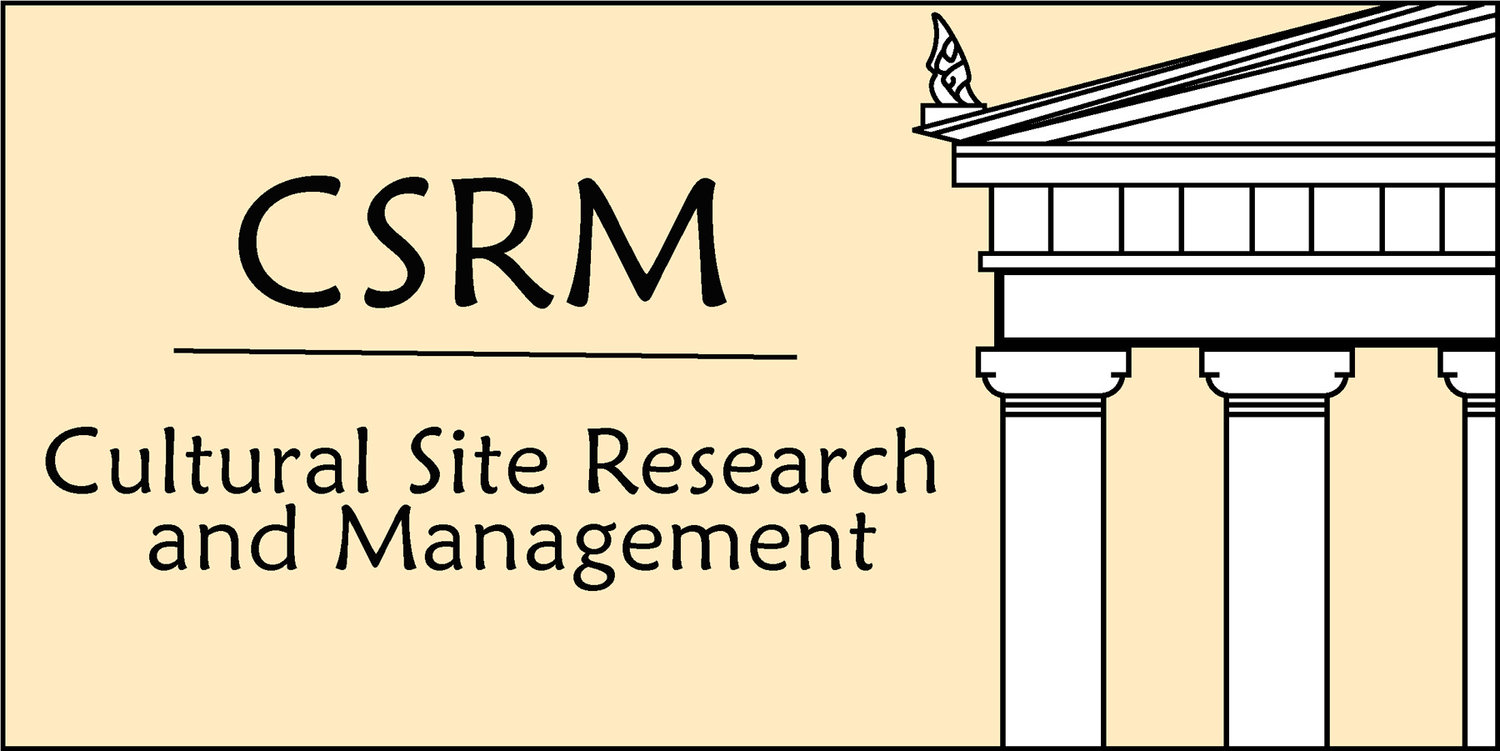Cultural Site Research and Management: the name says it all, even though it is difficult to remember and, actually, it needs a bit of explaining. The basic idea is a simple one, which is that effective and sustainable management requires a solid knowledge base. A knowledge base requires research. CSRM provides the kinds of research services that are needed for the management of protected areas, whether they are parks, preserves, World Heritage Sites, public lands, or lands under the stewardship of conservancies or other non-profit organizations. To manage these places, one must know and understand the importance of what is there that constitute resources to humans alive today. These resources can be archaeological or historic sites, places that are associated with living traditions or ancient beliefs, plants that provide habitat for animals or that are simply beautiful, the animals themselves, landscape features, minerals and soils; anything of value. So, the first step it to inventory these things. At the same time, it is wise to inventory infrastructure (like roads and utilities) that is often necessary to maintain these resources. In the end, all resources are cultural because they are considered as such by humans.
The next step is to evaluate resources. The evaluation is again based upon how valuable each resource is to humans today. All archaeological and historic sites are not equal, some can tell us more about the past than others, some are more beautiful than others or are associated with events or people that we want to remember. Some habitat is more necessary to the health of animal populations than others. Some rivers, lakes, and coastlines are more essential to environmental health or economies based on agriculture or fishing than others.
Evaluation is difficult; it requires comparison with other like resources. For this, a data base is needed, something that describes each resource, and the most informative data bases are geographical. As they say, location, location, location. Where something is in relation to everything else is a big factor in determining its value.
Once we know what we have, then we have to decide what we are going to do with it and how we are going to do it. That requires a plan—a management plan of some kind--and of course, implementation of the plan. CSRM does that, too.
To do all of this CSRM draws heavily on technology, certainly more heavily than almost all organizations that provide our kinds of services and perhaps more heavily than any other. Among the technologies that we make great use of are aerial and satellite remotes sensing, on-ground remote sensing, tracking technologies, and geographical information systems.
So, an incomplete list of services that CSRM provides would include:
- Inventory and evaluation of archaeological sites, historic sites, and tradional use areas
- Inventory and evaluation of features on the landscape that were not made by humans but that are important to humans, from coastal marine fisheries to types of habitat to sources of water and beyond.
- Developing management plans, from general management plans to economic development plans that focus on providing benefit to small and medium sized enterprises and operating plans, to interpretive plans and visitor services plans—any kind of plan that can contribute to sustainable management or a protected area and the surrounding region.
- Training that might be needed for implementation of management plans.
- Working with clients directly to implement management plans.
Sound simple? Sometime it is, sometimes it isn’t.
INVENTORIES
In order to manage effectively, it is necessary to know what is to be managed. At protected areas, this begins with an inventory of both cultural resources (such as archaeological and historic sites as well as traditional activities and activities areas), and natural resources (from terrain features to habitat). CSRM has partnered with leading universities and research organizations to develop a suite of technologies and strategies that can be used to both incorporate existing inventories and to develop new and improved ones.
EVALUATIONS
Decisions about what and how to preserve and conserve resources in protected areas must draw from a knowledge base that has identified those that are most important. CSRM has long and wide experiences in evaluating the importance of resources in terms of how they contribute to the public good on both a global and local basis. These contributions range from our knowledge of human and environmental history, to equitable economic development, to environmental services.
SITE MANAGEMENT
CSRM prepares management plans of all types, including:
- General Site Management Plans
- Cultural Site Analyses
- Carrying Capacity
- Interpretive Plans
- Management Analyses
- Operating Plans (management unit design and implementation)
INTERPRETIVE SERVICES
CSRM provides interpretive services of all types, from complete visitor center design to exhibit design, wayside exhibits and way-finding signage, brochures, and websites.
DATABASES
CSRM prepares user-friendly databases for all resources with geographical information system (GIS) technology.

